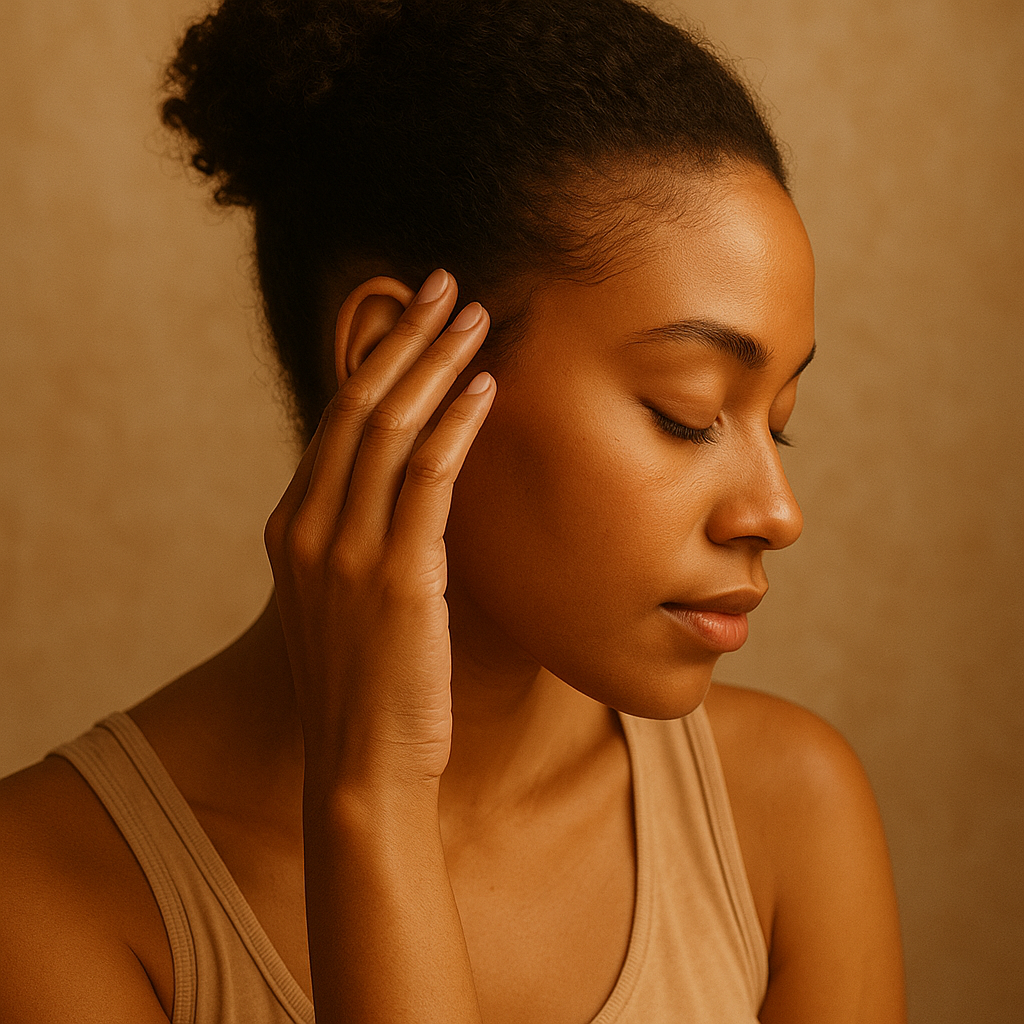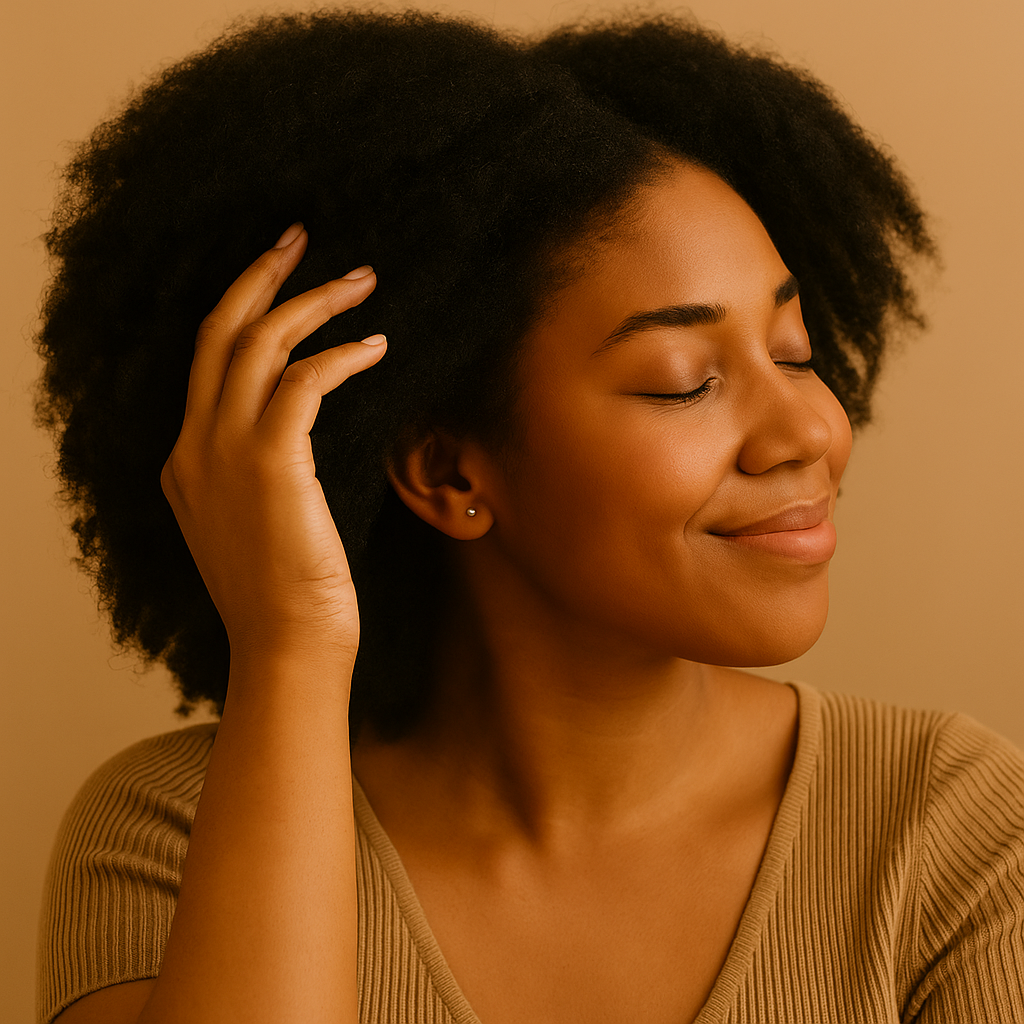Where Science Meets Culture
We pair clinically studied actives with time-honored scalp rituals—blending innovation and heritage to meet the unique biology of textured scalps, keeping them balanced, edges anchored, and crowns restored.
The Follicle: Your Growth Engine
Straight vs. Textured—Why Our Follicles Behave Differently
Every strand starts in a follicle deep in your scalp, where it’s anchored and nourished.
- Straight follicles: Circular in shape, growing strands vertically. This anchors hair evenly at the root and distributes tension across the scalp.
- Textured follicles: Oval to elliptical in shape, growing strands at an angle. This creates beautiful curls and coils—but those bends also form fragile points.
- Curved follicles put more stress at the root, especially along the edges and crown—your scalp’s most delicate areas.
Why It Matters To You
If your edges are thinning, your crown feels fragile, or regrowth just won’t come, it’s not random—and in many cases, it isn’t permanent.
Here’s the truth: when your follicles are under stress, your hairline is often the first to show it. The good news? With the right care, many scalps can see improvement over time.
With a focused approach, you can:
- Support and strengthen delicate areas
- Soothe scalp stress that keeps follicles out of balance
- Create the healthy conditions your roots need to thrive
This is why Scalp Retreat exists—to help you give your scalp what it needs, starting at the root.
Follicles can’t thrive without a healthy scalp. Learn how your scalp barrier sets the stage in the next section.
The Scalp Barrier: Your First Line of Defense

Straight vs. Textured: Why Barrier Health Differs
Your scalp is skin first. Like the rest of your skin, it has a protective barrier (called the stratum corneum) made of lipids—natural fats and oils that keep moisture in and shield what’s underneath.
- Straight scalps: Natural oils travel more easily across the scalp and down strands, helping keep the barrier hydrated and intact.
- Textured scalps: Curves and coils slow oil movement—both across the scalp and down the hair—leaving some areas, like edges and crown, drier and more vulnerable.
- When this barrier weakens, dryness, itching, and low-grade inflammation can follow, making it harder for follicles to stay balanced.

If your scalp often feels dry, tight, or itchy even when it’s clean, you’re not imagining it. In many cases, these may be signs of a stressed scalp barrier that needs extra support.
The good news? With the right care, you can help replenish and protect this barrier.
By focusing on scalp health, you can:
- Rehydrate and restore lipids that keep your scalp balanced
- Soothe the irritation that disrupts comfort and confidence
- Create an environment where follicles can thrive from the root up
This is why Scalp Retreat pairs scalp-focused science with routines made for textured hair—to help you protect your foundation and keep your edges and crown supported.
Why Scalp Health Is Essential For Textured Hair
Your scalp is more than just skin — it’s a living ecosystem that sets the stage for every strand you see (and even the ones you don’t).
And for textured hair, that environment is uniquely demanding:
-

Higher Follicle Density
Textured scalps have more follicles competing for oxygen and nutrients. Under stress, the body prioritizes—and the most delicate strands, like your edges and crown, are the first to show it.
Quick Takeaway: More follicles = more demand. Stress shows up first where your hair is most fragile.
-

Sebum Struggles To Travel
Natural oils can’t easily glide down coils and kinks. That leaves textured scalps vulnerable to dryness, micro-inflammation, and itch—quietly weakening the anchor that holds each strand.
Quick Takeaway: Less natural oil reach = more dryness and stress for textured scalps.
-

Protective Styles May Pull On Follicles
Braids, twists, locs, and ponytails are cultural and beautiful—but chronic tension can strain follicles at the root and weaken their grip over time.
Quick Takeaway: Protective styles protect length, but without follicle care, they can stress your edges.
-

Hormones Hit Our Hairline First
Hormonal shifts from stress to postpartum hit fragile zones first. That’s why your edges and crown often tell the story before the rest of your hair does.
Quick Takeaway: When hormones fluctuate, your hairline is the first to respond.

Why Scalp Retreat™ Exists
Scalp Retreat™ was born from a simple but radical idea: textured scalps deserve care that respects both science and culture.
We don’t believe in hype or surface fixes. We formulate with intention—honoring the biology of textured scalps while drawing from the legacy of ancestral care rituals passed down through generations.
At Scalp Retreat™, we merge clinical research with cultural reverence to protect what matters most: your edges, your crown, your peace.
This isn’t about chasing trends. It’s about restoring balance, reinforcing strength, and nurturing the scalp as the true source of growth.





